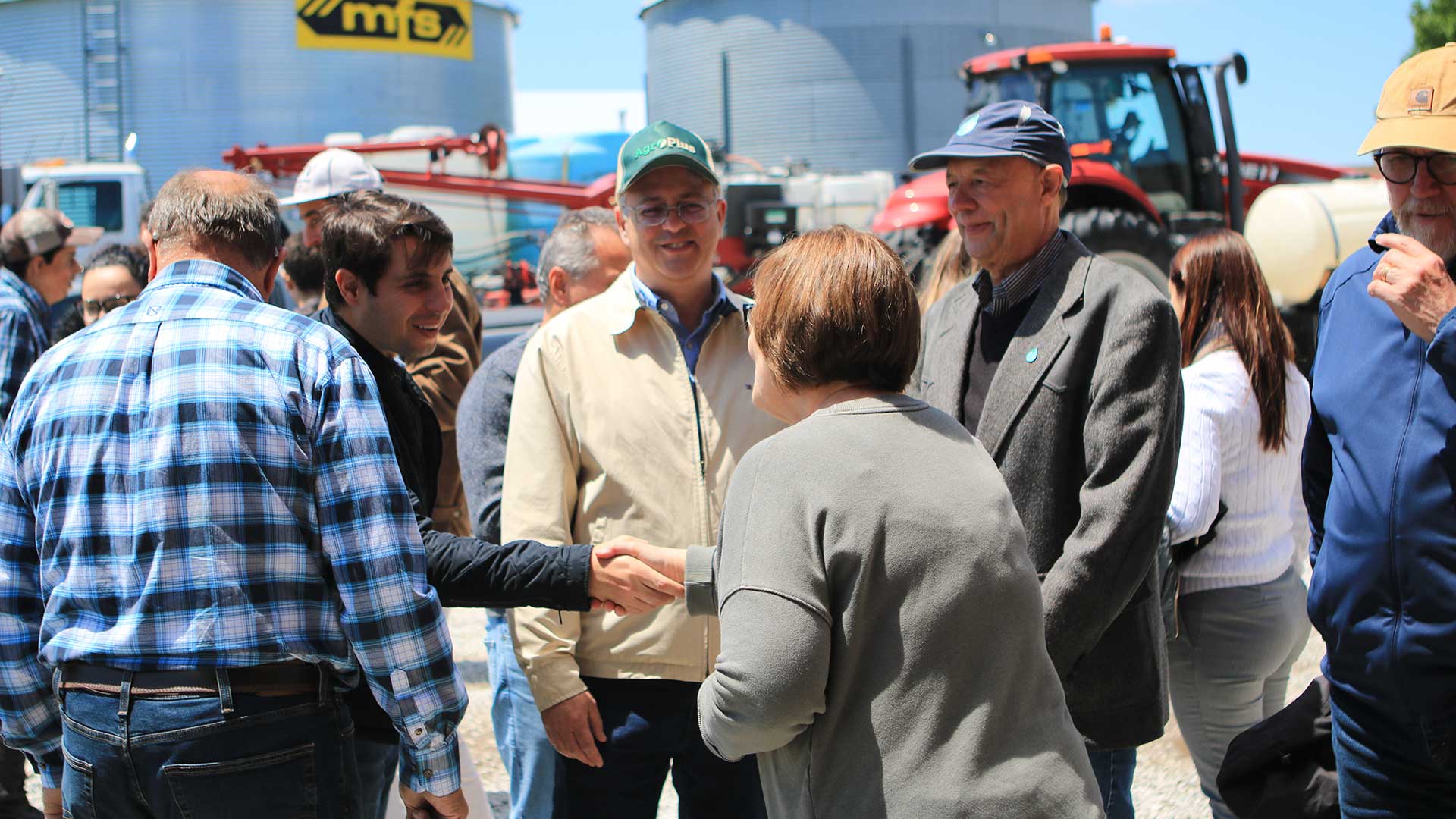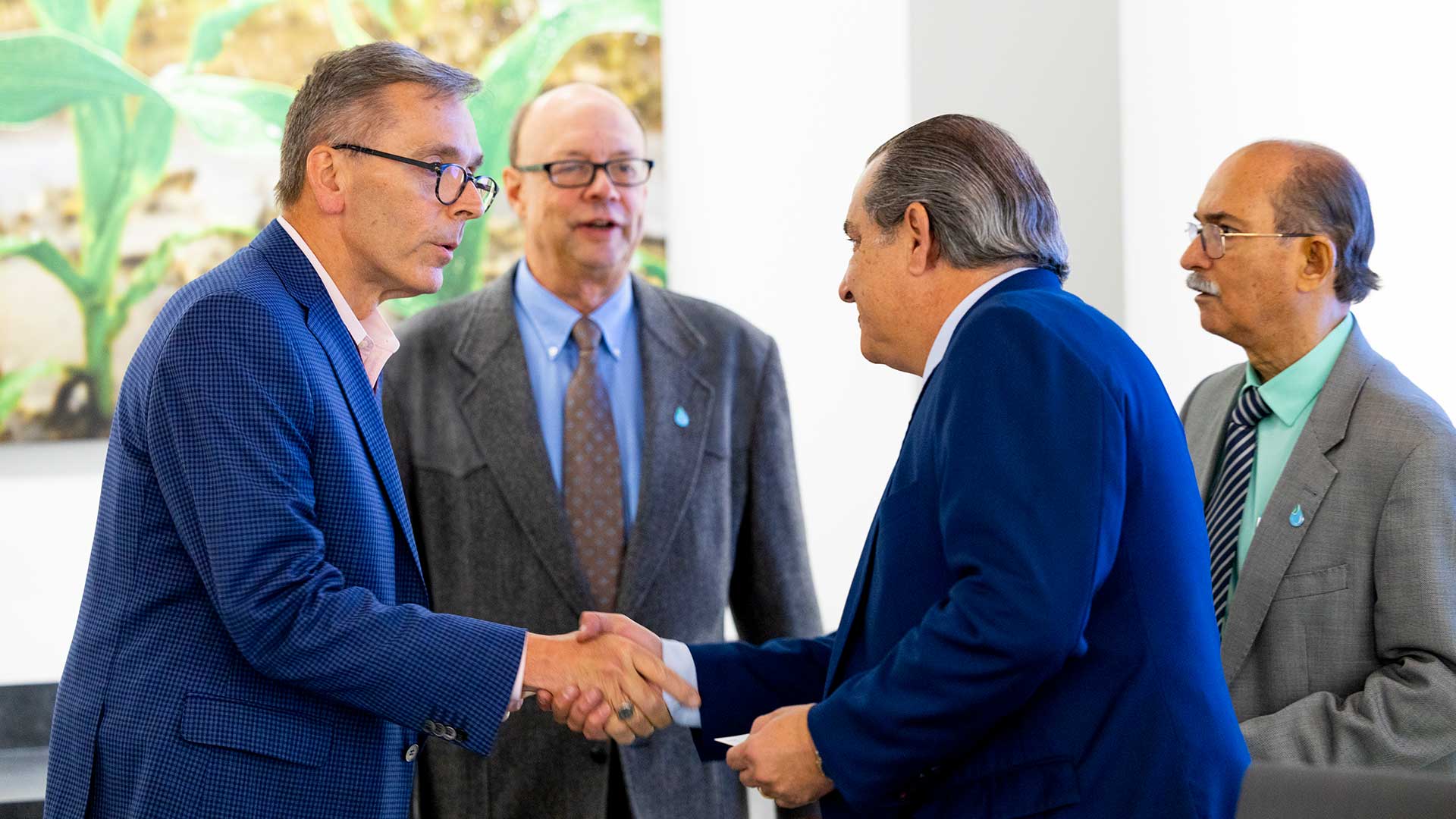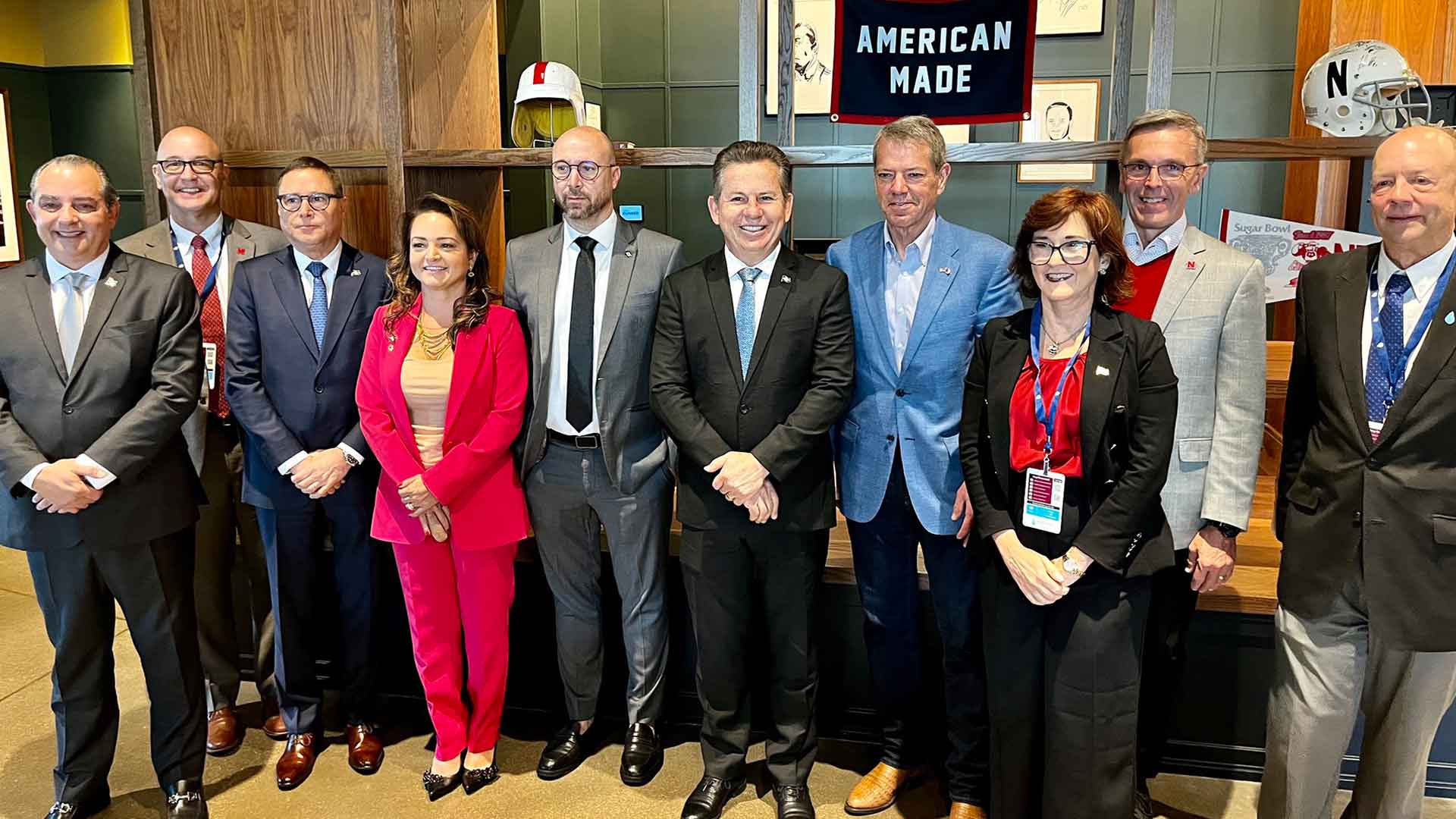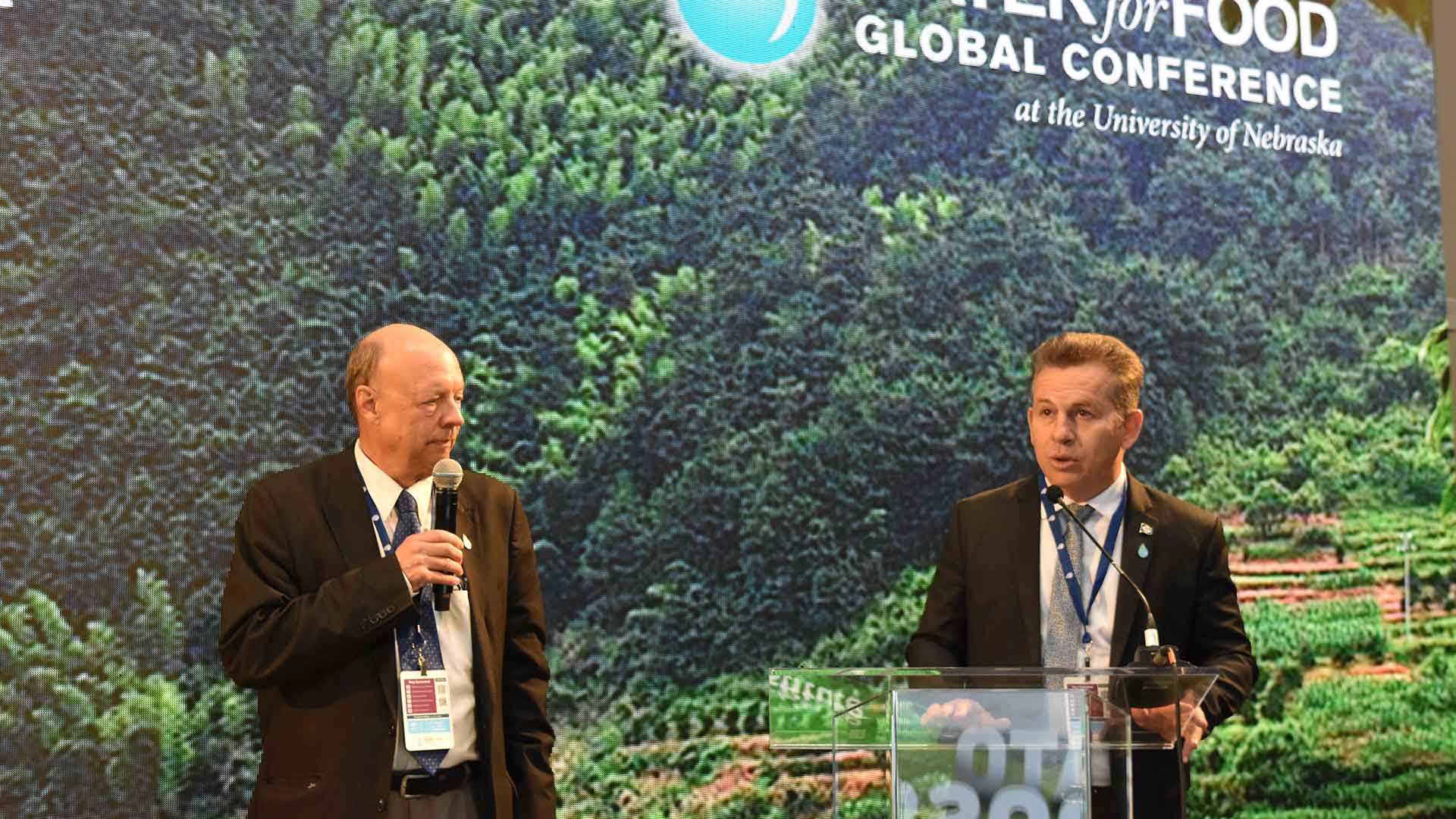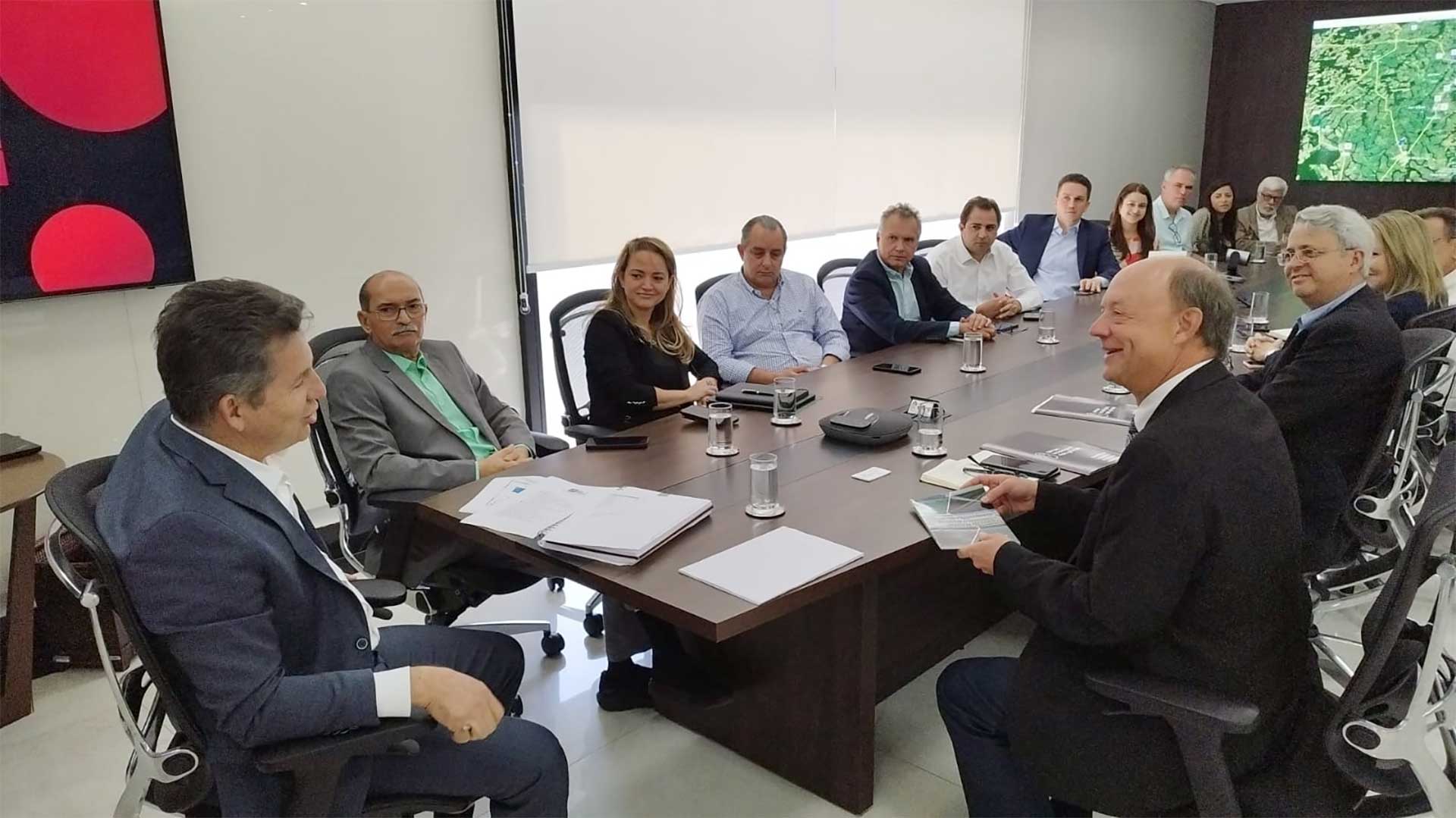Brazilian agricultural state looks to Nebraska and DWFI to sustainably manage water resources
The Brazilian state of Mato Grosso may not appear to have much in common with Nebraska, a midwestern state of the U.S. However, both are major agricultural states in the middle of their respective countries, both produce corn and soybeans, and both have groundwater available via nearby aquifers. It is because of these similarities that Mato Grosso is looking to Nebraska and its partners — via the University of Nebraska and the Daugherty Water for Food Global Institute (DWFI) — for a blueprint of sustainable water management.
Mato Grosso, Brazil is a top global producer of corn, soy, cotton, and beef. Eight months of rain allows for two growing seasons, which produce $21.6 billion in exports.
However, the rainy season has been steadily shortening. To keep up their current production and meet global demand, Mato Grosso needs to increase its agricultural production. And in order to preserve the Amazon and Cerrado savanna ecosystems, the state is looking to intensify existing cropland through irrigation.
Less than 1.5% of the state’s agricultural land is currently irrigated and increasing the amount of irrigated acres could add a third yearly crop production season. As the rainy season continues to shorten, using irrigation could also mitigate risks during the other two crop seasons.
In 2022, after a technical visit to Nebraska by a delegation of more than 20 from Mato Grosso, the Mato Grosso state government signed a technical collaboration agreement with DWFI and other partners, including the Federal University of Viçosa Minas Gerais and APROFIR, the association of dry bean producers and irrigators of Mato Grosso, to map its water potential in order to identify, monitor and define the sustainable use of water.
In May 2023, the Governor of Mato Grosso, Mauro Mendes, led a delegation to the Water for Food Global Conference, meeting with Nebraska Governor Jim Pillen to discuss opportunities for partnership between the two states. They also visited the Upper Big Blue Natural Resources District and two major Nebraska center pivot irrigation companies and DWFI partners, Valmont Industries and the Lindsay Corporation.
“In this first phase, we'll look at both groundwater and surface water recharge, among other things, to ensure that the water exists for irrigation without causing any downstream ecological issues, especially in the Pantanal wetlands ecosystem,” said Christopher Neale, DWFI director of research and lead on the project.
"We hope to increase the production of food while preserving the environment. That's the big challenge," Mendes said during his interpreted talk at the conference.
Mendes said preliminary studies indicate Brazil overall could convert 25.7 million acres (10.4 million hectares) to irrigation, including roughly 9.6 million acres (3.9 million hectares) in Mato Grosso.
The partnership between Mato Grosso, DWFI, the University of Nebraska and others involved is a direct result of a similar project between DWFI and Federal University of Viçosa Minas Gerais which began in 2021. In Bahia, Brazil, DWFI worked with local partners from several universities, state government and the Association of Farmers and Irrigators of Bahia (AIBA), to manage water from the Urucuia Aquifer—a large underground cache bearing many similarities to Nebraska’s High Plains Ogallala Aquifer.
“With climate change, we’re going to experience more frequent and extreme droughts and floods,” said Neale. “In 2014 and 2015, Brazil was in an extreme drought. They didn’t have enough sugar cane to produce ethanol, so we exported ethanol from Nebraska and Iowa to southern Brazil. Now look at it the other way around. If the Midwestern U.S. goes into an extreme drought for two or three years and there's not enough corn to feed cattle or for other uses, it could come from Mato Grosso.”
“Cultivating these relationships will ultimately benefit both parties, especially under a changing climate, as the ultimate goal is to produce more food and guarantee supply,” Neale said.
Through these partnerships, DWFI can fulfill its mission by having a direct impact on feeding the world’s growing population while ensuring we protect our natural resources worldwide for the next generation.
FY 2023 Annual Report
- Overview
- Introduction
-
Research and Policy
-
Global
- Brazilian agricultural state looks to Nebraska and DWFI to sustainably manage water resources
- Irrigation equipment ownership not always best for smallholder farmers
- McCornick and Neale re-elected to World Water Council, DWFI involved in preparations for the World Water Forum
- Understanding the agtech ecosystem in India can spur future investments
-
Regional + National
- DAWN Project testing its decision-support tools with corn and soybean growers
- Water Center director helps City of Lincoln find second water source
- Water, Climate and Health program makes an impact in Nebraska
- DWFI's flux tower network now helps validate carbon credits
- Understanding climate’s effect on the health of Americans
- Groundwater transfer success stories guide water managers in meeting local water needs
- Advancements in crop modeling help adapt to climate change
-
Global
-
Education
- Faculty Fellows
-
Supported Students
- DWFI funds eight new students working on mission-related projects
- DWFI continues support of Platte Basin Timelapse interns
- Estimation of manure nutrient capacity in Nebraska minimizes water quality impacts
- Could cover crops replace offset in-season corn fertilizer?
- Congratulations to DWFI-supported student graduates
-
Communication
- Digital and online engagement connects DWFI with its global audience
- Coverage of DWFI research and events reaches more than 219 million people
- Creative storytelling used to amplify DWFI smallholder irrigation research outputs
- DWFI expertise tapped for national reports and publications
- DWFI staff receive well-deserved recognition
- 2022 Nebraska Water Center Annual Report now available
-
Outreach and Events
- Global Conference draws international audience to address water and food security
- On-farm event in Western Nebraska strengthens partnerships, spurs new ideas
- Engagement recovers to pre-pandemic levels
- Drought at forefront of discussions at Platte River Basin Conference
- 49th Annual Water Tour broadens knowledge about Nebraska water
- Nebraska Water Center seminars focus on hot topics in Nebraska Water
- Development
- Resources
- Search
FY 2023 Annual Report
- Overview
- Introduction
-
Research and Policy
-
Global
- Brazilian agricultural state looks to Nebraska and DWFI to sustainably manage water resources
- Irrigation equipment ownership not always best for smallholder farmers
- McCornick and Neale re-elected to World Water Council, DWFI involved in preparations for the World Water Forum
- Understanding the agtech ecosystem in India can spur future investments
-
Regional + National
- DAWN Project testing its decision-support tools with corn and soybean growers
- Water Center director helps City of Lincoln find second water source
- Water, Climate and Health program makes an impact in Nebraska
- DWFI's flux tower network now helps validate carbon credits
- Understanding climate’s effect on the health of Americans
- Groundwater transfer success stories guide water managers in meeting local water needs
- Advancements in crop modeling help adapt to climate change
-
Global
-
Education
- Faculty Fellows
-
Supported Students
- DWFI funds eight new students working on mission-related projects
- DWFI continues support of Platte Basin Timelapse interns
- Estimation of manure nutrient capacity in Nebraska minimizes water quality impacts
- Could cover crops replace offset in-season corn fertilizer?
- Congratulations to DWFI-supported student graduates
-
Communication
- Digital and online engagement connects DWFI with its global audience
- Coverage of DWFI research and events reaches more than 219 million people
- Creative storytelling used to amplify DWFI smallholder irrigation research outputs
- DWFI expertise tapped for national reports and publications
- DWFI staff receive well-deserved recognition
- 2022 Nebraska Water Center Annual Report now available
-
Outreach and Events
- Global Conference draws international audience to address water and food security
- On-farm event in Western Nebraska strengthens partnerships, spurs new ideas
- Engagement recovers to pre-pandemic levels
- Drought at forefront of discussions at Platte River Basin Conference
- 49th Annual Water Tour broadens knowledge about Nebraska water
- Nebraska Water Center seminars focus on hot topics in Nebraska Water
- Development
- Resources
- Search
Top image caption
Cotton ready for harvest. Mato Grosso, Brazil is a top global producer of corn, soy, cotton, and beef.
Credit: Storyblocks | GoviFx
Related Articles
McCornick and Neale re-elected to World Water Council, DWFI involved in preparations for the World Water Forum
The 9th General Assembly of the World Water Council (WWC) re-elected DWFI Executive Director Peter McCornick to the council’s board of governors during its meeting in Paris in December 2022.
Understanding the agtech ecosystem in India can spur future investments
By 2030, India will have a freshwater shortfall of about 50 percent. Agriculture accounts for 78 percent of the country’s water use and irrigation innovation will be key to meeting the demand for water and food in the future.
Irrigation equipment ownership not always best for smallholder farmers
Small farms less than 2 hectares — or about 5 acres — account for 11% of the world's agricultural land, yet they produce 35% of the world’s food.
COOKIE USAGE:
The University of Nebraska System uses cookies to give you the best online experience. By clicking "I Agree" and/or continuing to use this website without adjusting your browser settings, you accept the use of cookies.


